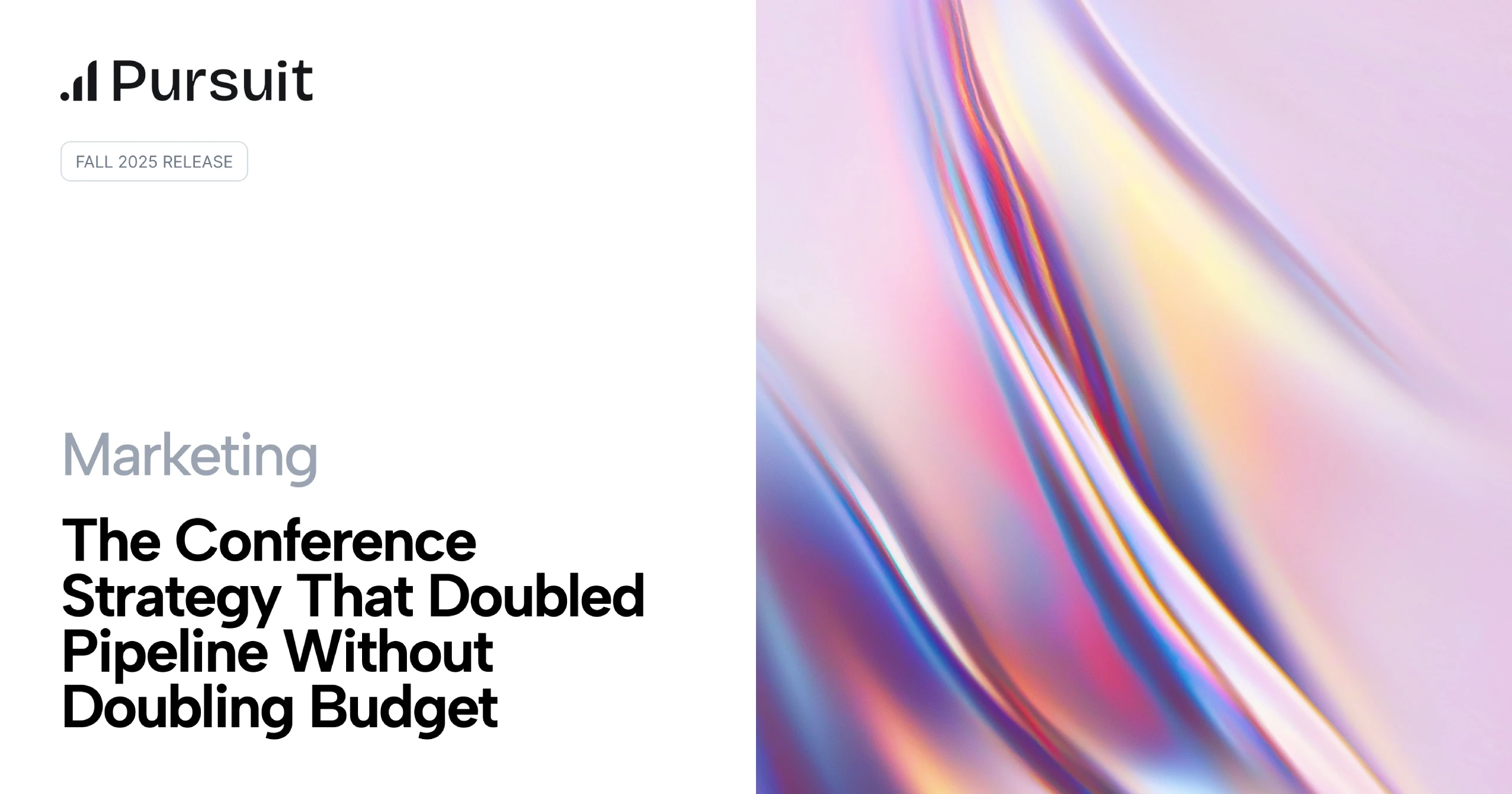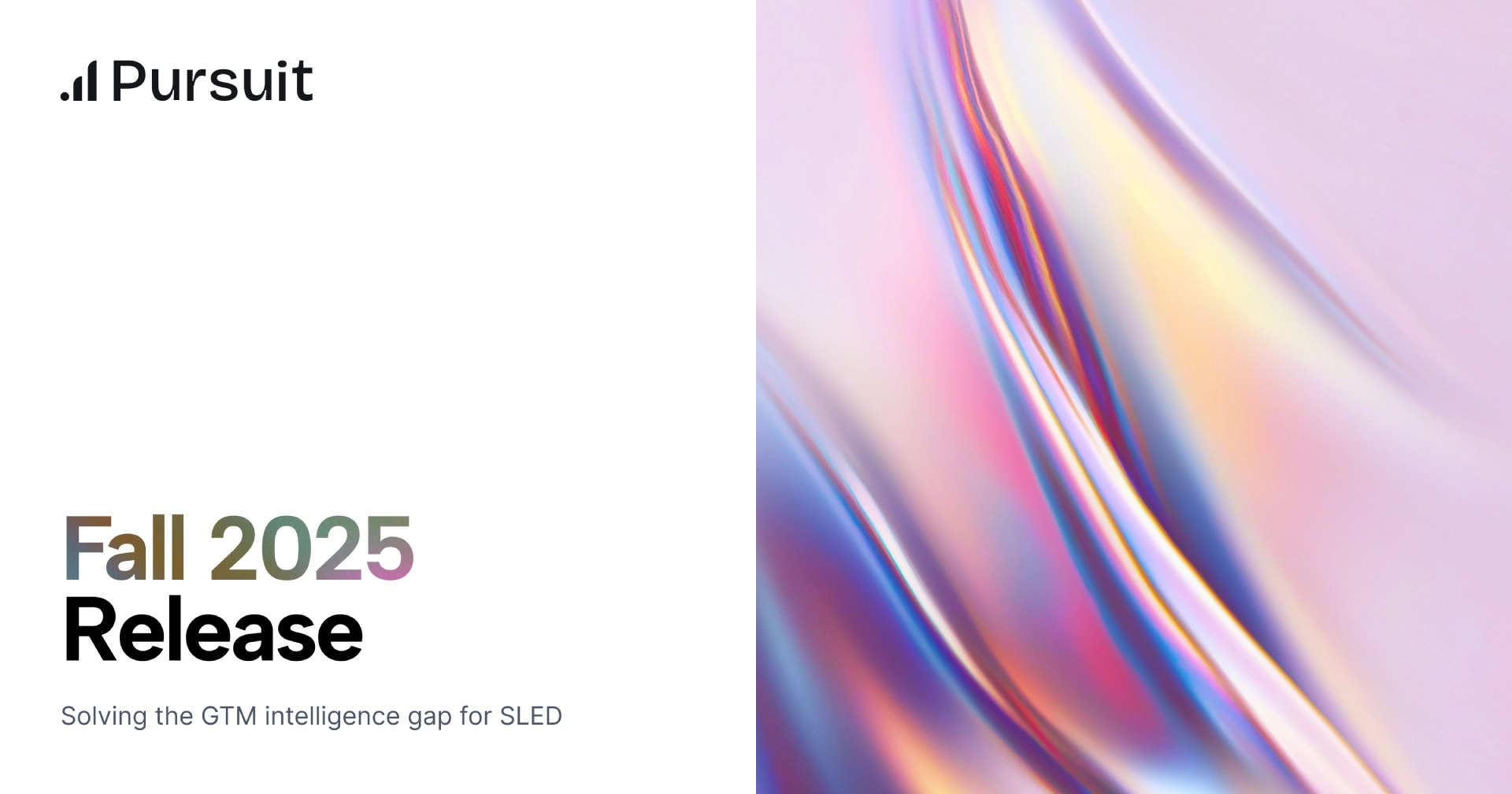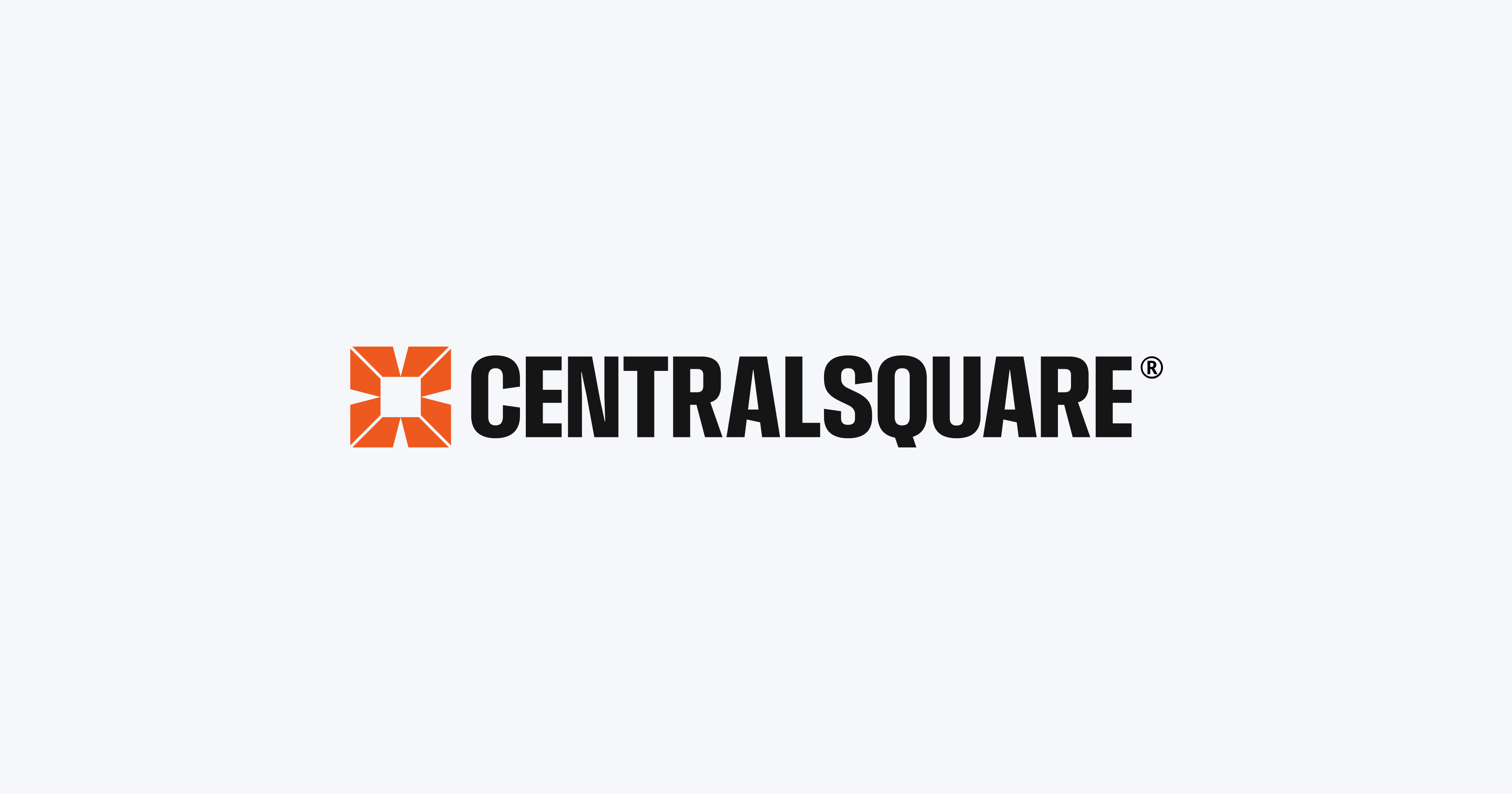Marketing: The Conference Strategy That Doubled Pipeline Without Doubling Budget

You drop $120k on a conference sponsorship and, let’s be honest, that’s just the floor space. Add travel, hotels, dinners, swag, and suddenly this one event is a major line item on your budget.
And the unspoken truth is: your boss isn’t judging the event. They’re judging you on whether pipeline comes out of it.
Most teams still treat conferences like this: send a few generic emails beforehand, stand at the booth, scan badges, dump the list into marketing automation, spray a follow-up sequence, hope something sticks. It’s expensive, exhausting, and hard to prove it’s better than just… running more campaigns.
Pursuit flips that into a conference strategy that actually doubles pipeline without doubling spend by changing how you work before, during, and after the show.
Step 1: Turn the sponsor list into usable data (before the event)
As a sponsor, you usually get a “list of attendees” as part of the package. It sounds great until you open the file and realize it’s just: first name, last name, organization.
No emails. No phones. No way to know who’s actually worth your team’s time. With Pursuit, that list becomes the starting point instead of a dead end.
You upload the conference roster into Pursuit’s Intel view. It takes those names and organizations and returns real contacts: emails, phone numbers, confidence scores, and enough detail to know you’re talking to the right person. In the example from the video, that meant turning an attendee list for a Michigan IT Leadership Summit into 187 high-quality contacts with contact info you can actually campaign against.
You can dial up quality (e.g., only contacts above a certain confidence threshold, only those with emails) and push the final list into your CRM or MAP. Now your pre-event campaigns aren’t “to whom it may concern” blasts – they’re targeted touches to the actual people walking the show floor.
Step 2: Give your AEs a reason to start real conversations (during the event)
Here’s where most conference strategies fall apart.
You’ve spent months on branding, the booth, campaigns, and logistics… and then your sales team ends up improvising the same three awkward openers with every passerby.
“So, what do you guys do?” “Have you heard of us before?” “What brings you to the show?”
Not exactly memorable. Pursuit lets marketing show up as the hero by spoon-feeding every AE and BDR a short, researched icebreaker for the people who matter most.
In the workflow from the video, the marketing team:
- Takes the accounts and contacts that will be at the conference (e.g., those Michigan IT leaders).
- Drops them into Pursuit in “pipeline mode.”
- Selects the top 100 entities they care about.
- Runs an AI prompt on those rows to generate a custom column called something like Icebreaker.
The prompt isn’t magic; it’s structured:
- It knows which company you’re representing (e.g., Cisco).
- It uses the product profiles set up by RevOps (e.g., you’re selling security).
- It pulls in prior research prompts if you want (like recent security initiatives or projects at that entity)
You specify the format: three sentences, first line starts with “Hi, I’ve been hoping to find you,” reference a relevant initiative, close by asking for five minutes to chat. Pursuit “promptifies” it, runs the research in the background, and fills that Icebreaker column for every target account.
Now, instead of sending your team to the booth with vibes and a prayer, you can:
- Export a quick lookbook with the attendee’s name, photo, org, and a tailored opener.
- Push those icebreakers into Salesforce so they’re visible in mobile or on a laptop.
Your AEs can literally walk the floor saying:
“Hey, I’ve been hoping to find you. I saw you’re working on XYZ security initiative back in Michigan – we’ve been helping other agencies with exactly that. Can we grab five minutes?”
It feels researched and relevant because it is. And from a marketing perspective, you’ve just turned a fuzzy “we’ll see what happens” booth presence into a repeatable, orchestrated experience.
Step 3: Keep the conversation going with real context (after the event)
After the show, most teams do the same thing: dump the leads, tag them “Event – [Name]”, and fire off a generic nurture with a slightly different subject line.
With Pursuit in the mix, your follow-up can be anchored to the same intelligence that powered the icebreakers:
- You already know which initiatives each attendee cares about.
- You have the specific hooks your AEs were using on the floor.
- You can generate post-event sequences that reference those threads directly.
Instead of “Great to meet you at [Conference], here’s our generic pitch,” your campaigns sound like:
- “Following up on your modernization work we talked about at the Michigan summit…”
- “You mentioned your team is updating XYZ system – here’s a short resource that maps to that project…”
Marketing can also generate briefing docs for sales: who attended, what they’re working on, which sessions or topics they’re likely to care about, and suggested follow-up angles.
You’re no longer guessing which booth scans are worth prioritizing. You’re ranking them by relevance and motion—exactly the stuff your CRO cares about when they ask, “So what did we actually get from that show?”
Why this doubles pipeline without doubling budget
Nothing in this strategy requires you to spend more on floor space, sponsorship tiers, or a bigger booth. You’re squeezing more value out of the same investment by changing how you use data and AI around the event:
- The attendee list turns into a high-quality, contactable audience.
- The booth turns into a series of targeted, high-intent conversations.
- The follow-up becomes specific, timely, and tied to real initiatives.
From a marketing lens, this is the difference between “We sponsored a conference” and “We ran a full-funnel program anchored on a conference.”
Ready to make your next conference actually move pipeline? Let's talk.


